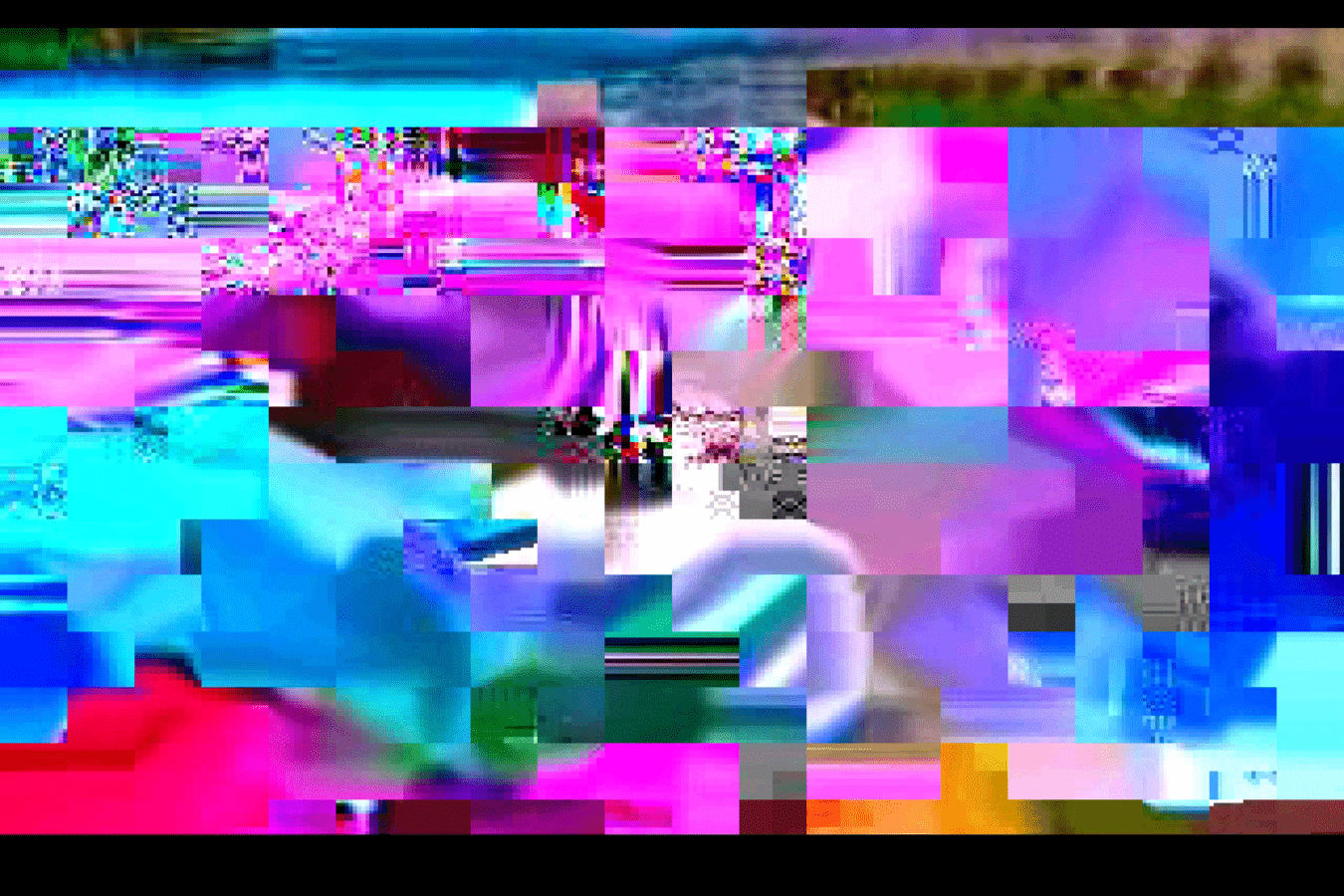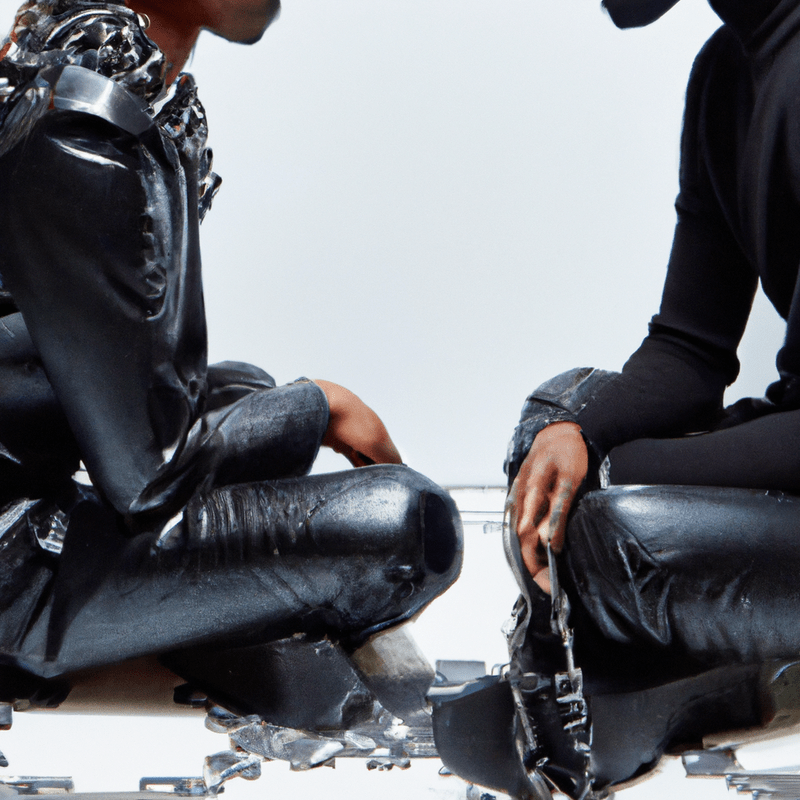Artists on Games
Mitchell F. Chan interviews artists to understand how games have influenced their work.

As Rosa Menkman writes in the introduction to Outland’s special issue on glitch art, “There are as many stories of glitch as there are practitioners and individuals experiencing or working with the glitch.” Each artist brings their own perspective—their background, their skills, their imagination—to bear on the work they carry out. It would be impossible to chart all their stories, but we can offer a sample. Below, three artists share the approaches they have developed, all of which entail an oppositional stance toward the mainstream use of technology. SHAWNÉ MICHAELAIN HOLLOWAY shares how her experience in the “dirty new media” scene and shaped her understanding of her body in relation to machines. – and its resistance of technology. Raquel Meyers discusses her use of a Commodore 64 computer as a way to understand an obsolete technology rather than throwing it out, and thereby resist the market’s demand for constant updates. And Paul B. Davis talks about the popularization of compression aesthetics as “datamoshing,” and the impact that the adoption of glitch in pop culture had on artists.
(This is the second in two-part series entitled “Lenses on Glitch.” Read part one here.)

Dirty new media is an aggressively critical and revisionist way of making art with technology. Because no single academic discipline or artistic community can seem to agree on what exactly new media is—on what qualifies as “technological” enough to be labeled as such in a museum—dirty new media art can be anything from videos, viruses, and radio stations to paintings, poems, and performance. In the spirit of Marshall McLuhan’s phrase “the medium is the message,” what galvanizes dirty new media as a methodology is brash candor in the face of an urgency, whether that urgency is felt because of desire and sexuality or anger at injustices in the intersecting (and often conflicting) conditions of society, technology, and the self.
Despite its best efforts at resisting legibility, dirty new media has become seen as the emo kid of “art and tech” as it constantly searches for a sense of self in other places, drawing from other disciplines or aesthetics, like from its predecessor tactical media, a tech-enabled interventionist art, or from its twin flame glitch, an art of failure. This overly formalist approach indicates the discipline with which dirty new media attempts to reconcile fine arts tradition with post-modern life. However, the mediums from which these tools are borrowed disagree with the core of dirty new media’s existence so much that it created its own identity out of the same flurry of naive rebellion that prompted this adoption tactic in the first place. Dirty new media works are often rapidly completed, ephemeral, or perhaps just broken and nasty-looking. They hinge on the edge of an anticipation of some kind of death. To meet the demands of my work They Laid Down Their Hammers and Cried (2023), a cyberqueer reimagining of the myth of John Henry, the steel-driving man, I made that risk real within my body as I trained as a powerlifter and bodybuilder for over a year and a half. In this performance, custom electronic sensors send signals to speakers and multi-screen displays through series of generators connected to synthesizers that scramble audio and text from a poem written in the form of The Rifleman’s Creed as I swing a heavy sledgehammer three hundred times. The recollection of labor, militarization, and ritualistic discipline sets up a parallel between Black American life and conventional software programming. I ask: “Is life possible for a machine at rest?”
Mortality is at the central core of how dirty new media artists navigate both art-making and the world; it is art about an obsessive desire that might die, about living in a body that might perish. Their attachment to fragile bodies-at-work can be traced back to dadaist performance, expanded cinema happenings, and experiments at the Electronic Visualization Lab at the University of Illinois at Chicago beginning in the 1970s, which merged programming languages, dancers, and analog video synthesis. As a student of this Chicago-based medium who has evolved from making gifs to large-scale theatrical works, I embrace the immediacy of physicality as it is always already mediated through technology. My obsession with building and breaking psychic barriers between what it means to explore haptic feedback on machines and other humans through the lens of sadomasochism necessitates the anxiety-driven recklessness that dirty new media cultivates. I’m learning that dirty new media is one part of the artworld that doesn’t need me, a Black feminist dyke, to be dead or compromised in order for it to exist.

Obsolescence is accepted in our daily life. we have no time to learn how to use technological goods before they become waste. I didn’t own a Commodore 64, an 8-bit home computer from 1982, until 2011, when I was in my thirties. I had just moved to Sweden, and it was a welcome present to a new country and the demoscene there. So it’s not an object of nostalgia for me. It is a tool, and it does not matter that it’s obsolete. It is a concrete redundancy. Redundancy is the state of not being necessary or useful. Concrete is a material that, like technology and humanity, is built-in obsolescence. Reinforced concrete enables quick construction, but it falls apart quickly, leaving rubble for the future. In this way concrete is like technological devices that become junk before we learn how to use them or break them. What we leave behind will be thrown away, sold, or destroyed.
I used the Commodore 64 in a very particular way with a piece of software developed by Mathman (Johan Kotlinski) called Nop. The program consists of two parts: a block of data statements containing the instructions for determining colors, positions, and shapes via keystrokes, and a section of code, which reads the data and outputs the animation. There is no menu. A black screen with a blinking cursor is the starting point to build graphics and animations, character by character. This process is like cross-stitch, a form of counted thread embroidery, or the typewriter technique, both not allowing for corrections. Any unintended strikes force the user to start all over again. The characters in Commodore 64 are called PETSCII (PET Standard Code of Information Interchange), as opposed to ASCII, the universal standard of characters in use today. They came into use with the invention of the Commodore PET (Personal Electronic Transactor) in 1977, the year I was born. PETSCII and I are already obsolete. With Nop, PETSCII can be used without ornament, like concrete in brutalist architecture, to capture the spirit and the contradictions of our time.
Obsolete hardware and software are a challenge for artists. They are not decorations or sources of nostalgia. They prompt a conversation about the need for a deeper understanding of the digital technology that has infiltrated our everyday lives. We must continue innumerable acts of resistance. The tyranny of the “easy to use” and immediate gratification are dissuasive tactics that lead toward boredom. Concrete redundancy is a tool for the struggle, a temporary raw habitat beyond the planned obsolescence.
As I teenager I had a summer temp job, doing computer stuff for a local hospital. An image file that I was transferring got corrupted in ftp. It was an image of a person; the whole bottom half had been shifted, and there were pixels in the middle. I thought it was interesting and I tried to figure out how that happened. That was the moment when I became aware of compression as something I could do myself—I could use a hex editor to change a few bytes in a jpg and get some colorful, staticky stuff.
At that time I didn’t feel like I had a lot of control over the final output. I could glitch a file a hundred times and one or two would be good, but I didn’t know what made them better. I found the randomness tedious. Glitching became a default process when I didn’t have a better idea for a work. It wasn’t until I saw the really goopy, moving, image compression stuff I realized i could have more control over the glitch.
I saw Takeshi Murata’s work in 2006, when we were in a show together at Vilma Gold in London. He demonstrated how in video the glitch expands over time. He would jump back and forth manually in a DVD playback program until an error happened. Then it would get propagated in another error. He’d go one frame back at a time, capturing each one, and then reassembling all the screen captures into a video. To me that seemed crazy. I wanted to figure out how I could generate the effect by regular glitch processes.
I used avi files, a Windows format. The file would designate a particular frame as the keyframe, where every single pixel is described with full-color values—something close to an uncompressed frame. The next several dozen frames after that only store data that describes the difference between them and the keyframe. If you glitch the keyframe, you’ll get a domino effect cascading through the rest of the file. And you can pick the spots where you want the glitching to happen, because you can encode a video and set keyframes at specific places. The results seemed much richer than what I could do with jpgs.
Often works don’t come from sophisticated ideas. In 2007 Jacob Ciocci and I were sitting around, thinking we should do a video mashup. He noticed that “Zombie” by the Cranberries and “Umbrella” by Rihanna were very similar harmonically. So the mashup worked musically, and we synced the keyframing technique to the edit as it bounced back and forth between the two videos. Rihanna would turn and say “umbrella,” then the motion of the Cranberries video would pull out of it. Then Dolores O’Riordan would freeze and it would go back to Rihanna. Eventually it got more intense and happened faster and faster. At the end there were about 30 or 40 seconds of YouTube funnies, Paper Rad-style.
Jacob just put a brain-fart description in the title, like Monster Movie Mosh. It probably said “data mosh” somewhere in a collection of words. We never intended for that to be a term, but it made sense, I suppose. At the time I thought it was a dumb name but I didn’t come up with anything better than compression aesthetics, which was really dry and hard to understand. “Datamoshing” fit the look of the material.
I liked how YouTube gave me access to raw pop culture footage. I was interested in the architecture of how the codec worked. I didn’t really care about that much about the content—whether it was Matthew Barney or Barney the Dinosaur. My work could be quite esoteric or introverted. There aren’t really that many people interested in file formats and compression and keyframes. Pop culture material helped a nonspecialist audience recognize that something has happened, a transformation has occurred. To have it then suddenly appear in a Kanye West video as an effect, I guess, was inevitable. But at the time I was annoyed—I wrote a statement for my 2009 exhibition about how Kanye fucked up my show. A special thing that a couple artists were doing suddenly didn’t feel that special anymore. The ability to critique cultural material as being monotonous felt diminished because most people encountered that method in a pop music video. That’s one of the reasons why I left it behind.
—as told to Brian Droitcour
